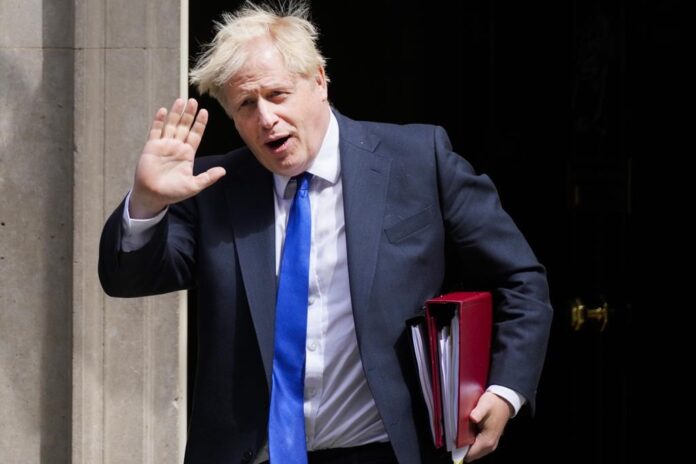British Prime Minister Boris Johnson was clinging to power on Wednesday, gravely wounded by the resignation of ministers who said he was not fit to govern and with a growing number of lawmakers calling for him to go.
Johnson narrowly survived a confidence vote last month, giving him 12 months of immunity from another one. But some lawmakers in his Conservative Party have been trying to change the party rules to shorten that immunity period.
Other lawmakers had appealed to Johnson’s top team of cabinet ministers to move against him.
Below are options for how Johnson could be forced out, and how the process to find a replacement would work:
– Johnson could decide he has lost the support of too many members of his party and the cabinet and resign. He has so far shown no signs of being willing to do this.
– Several more members of the cabinet could quit and call on Johnson to go, almost certainly forcing him to resign. However, media reports suggest other senior members of the cabinet, including Foreign Secretary Liz Truss, Defence Secretary Ben Wallace, and Levelling Up Secretary Michael Gove are staying in place.
– Some lawmakers have been trying to change the party rules so they can hold another vote of confidence sooner than is currently allowed. Elections for the membership of the so-called 1922 Committee, which sets the rules, are due to be held shortly.
Were Johnson to be ousted, a process would be held to find a new leader. Here is how that process, which is overseen by the 1922 Committee, is likely to work:
Trending Stories
Think you’re immune to COVID-19 after getting sick? Maybe not, new research shows
$350K raised for Burger King worker who got a paltry gift bag for 27-year service
– Candidates putting themselves forward for the leadership must be nominated by two other Conservative lawmakers. There could be a wide field of candidates.
– Conservative lawmakers then hold several rounds of votes to whittle down the number of candidates. Each time they are asked to vote for their favored candidate in a secret ballot, and the person with the fewest votes is eliminated.
– This process is repeated until there are two candidates remaining. Votes previously have been held on Tuesdays and Thursdays.
– The final two candidates are then put to a postal ballot of the wider Conservative Party membership, with the winner named the new leader.
– The leader of the party with a majority in the House of Commons is the de facto prime minister. They do not have to call a snap election, but have the power to do so.
2 key British cabinet ministers quit, government in crisis
The length of time the leadership contest takes can vary, depending on how many people put themselves forward. Theresa May became leader less than three weeks after predecessor David Cameron resigned in 2016 and all other contenders dropped out mid-race.
Johnson faced former health minister Jeremy Hunt in the run-off ballot of Conservative members to replace May in 2019, and took office two months after May announced her intention to resign.
Johnson says he would defend Rwandan deportation policy to Prince Charles – Jun 23, 2022
(Reporting by Kate Holton and Alistair Smout, Editing by Rosalba O’Brien and Catherine Evans)
© 2022 Reuters



